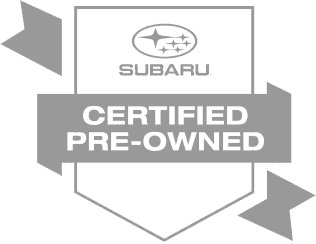SUBARU REQUIRES SUBARU SYNTHETIC 0W-20 MOTOR OIL(OR EQUIVALENT) FOR THE NEW NON-TURBOCHARGED fb ENGINE AND REQUIRES SUBARU SYNTHETIC 5W-30 MOTOR OIL (OR EQUIVALENT) FOR ITS 2011 and newer TURBOCHARGED VEHICLES. HERE'S WHY.
CHALLENGES POSED BY THE MODERN ENGINES
The new FB SUBARU BOXER four-cylinder non-turbocharged engine in the 2011 Forester was designed and engineered for improved fuel economy, a wider range of power, and improved response. The design puts different demands on engine oil.
Turbocharged engines also place unique demands on motor oil, exposing it to extreme heat and high engine speeds. These tend to break down conventional oil more quickly. Turbochargers operate at higher temperatures, which can lead to restricted oil passageways and deposits on the turbine shafts if the engine is not maintained properly.
As a result, Subaru 0W-20 synthetic motor oil (or equivalent) is required for the FB engine and Subaru 5W-30 synthetic motor oil for Subaru 2011 turbocharged engines. Subaru synthetic 0W-20 is uniquely formulated to handle the low-friction design of the FB engine, while Subaru synthetic 5W-30 is formulated specifically to address the harsh demands of a turbocharged engine. For 2010 and earlier turbocharged engines, Subaru also recommends the Subaru synthetic 5W-30 motor oil.
Conventional and synthetic oil both are produced from crude oil. Their differences lie in how they're refined.
A synthetic base oil can be produced by using two different processes. Both processes start with crude oil. The first process separates and breaks crude oil into small molecules and then uses polymerizations (forming larger molecules from two or more molecules by a chemical reaction) to derive a synthetic oil base from crude. The second process refines crude oil into conventional base oil and then undergoes hydrocracking (breaking crude oil's heavy hydrocarbons into lighter products in the presence of hydrogen) and hydroisomerizing (changing hydrocarbon compounds into a different molecular form).
Additives mixed with the synthetic base oil enhance its performance. In its final form, synthetic oil is approximately 80 percent synthetic base oil and 20 percent additives.
MEETING THE CHALLENGES
There are three major differences between conventional and synthetic oils. Synthetic oil is more stable against oxidation and breakdown, has a higher viscosity index, and demonstrates lower volatility.
Stability
Because of its high stability, synthetic oil protects against breakdown, which can lead to residue formation (called "coking" and "sludge") and engine deposits, and results in reduced engine wear. The engine runs cleaner, and the oil has a longer life.
Viscosity
Perceived as thickness or resistance to flow, viscosity is a measure of a fluid's resistance to deform under stress. Viscosity is oil's most important characteristic, and the level of viscosity is specified based on engine design and operating temperature. If an oil's viscosity is too high or too low, it will cause undue stress to the engine, breaking down the oil structure and wearing out the engine.
An oil's nomenclature indicates its viscosity. In the reference to 5W-30, the 5 is a relative measure of viscosity at low engine temperatures, and 30 is the relative viscosity at high engine temperatures. The lower the numbers, the easier the flow rate.
Synthetic oils have a more stable viscosity over an engine's operating range.
Volatility
This
is an oil's tendency to lose its lighter components through evaporation.
Volatility is a function of the base oil. Synthetic oils tend to have lower
volatility, which helps to reduce emissions and residue as well as improve
service life.




